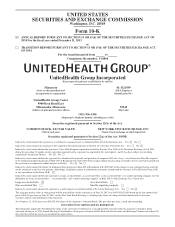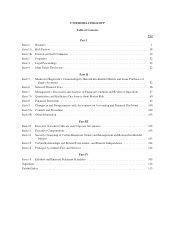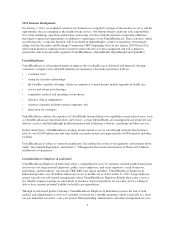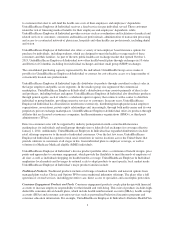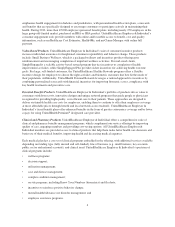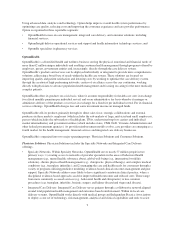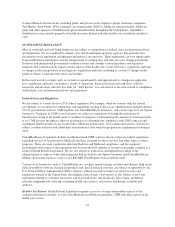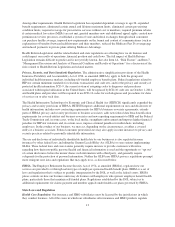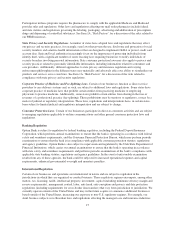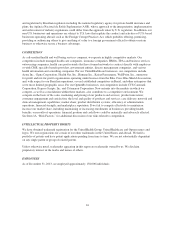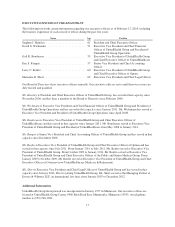United Healthcare 2013 Annual Report Download - page 9
Download and view the complete annual report
Please find page 9 of the 2013 United Healthcare annual report below. You can navigate through the pages in the report by either clicking on the pages listed below, or by using the keyword search tool below to find specific information within the annual report.its Medicaid managed care program in terms of service, innovation and funding; the eligible population base,
both immediate and long term; and the structure of the projected program. UnitedHealthcare Community & State
works with its state customers to advocate for actuarially sound rates that are commensurate with medical cost
trends.
The primary categories of eligibility for the programs served by UnitedHealthcare Community & State and our
participation are:
• Temporary Assistance to Needy Families, primarily young women and children – 19 markets;
• CHIP – 19 markets;
• Dual SNP – 18 markets;
• Aged, Blind and Disabled (ABD) – 14 markets;
• Long-Term Care (LTC) – 10 markets;
• childless adults & programs for the uninsured – 7 markets;
• other programs (e.g., developmentally disabled, rehabilitative services) – 5 markets; and
• administrative service offering – 1 market.
The health plans and care programs offered are designed to address the complex needs of the populations they
serve, including the chronically ill, those with disabilities and people with a higher risk of medical, behavioral
and social conditions. UnitedHealthcare Community & State leverages the national capabilities of UnitedHealth
Group, delivering them at the local market level to support effective care management, strong regulatory
partnerships, greater administrative efficiency, improved clinical outcomes and the ability to adapt to a changing
market environment. UnitedHealthcare Community & State coordinates resources among family, physicians,
other health care providers, and government and community-based agencies and organizations to facilitate
continuous and effective care. UnitedHealthcare Community & State administers benefits for the unique needs of
children, pregnant women, adults, seniors and those who are eligible for care in nursing homes and assisted
living. They often live in areas that are medically underserved and are less likely to have a consistent relationship
with the medical community or a care provider. They also tend to face significant social and economic
challenges. UnitedHealthcare Community & State recognizes that within these broad groups, there exist
individuals whose collective physical, behavioral and social challenges are so significant that they drive an
inordinate percentage of UnitedHealthcare Community & State’s total medical costs. In UnitedHealthcare
Community & State’s insured Medicaid population, approximately 1% of its membership accounts for about
30% of total costs. Care providers sometimes refer to this group as super utilizers.
The LTC market represents only 6% of the total Medicaid population, yet accounts for more than 30% of total
Medicaid expenditures. The LTC population is made up of nearly 4 million individuals who qualify for
additional benefits under LTC programs and represent a subset of the more than 15 million ABD Americans.
Currently, only one-quarter of the ABD population and less than 20% of the LTC eligible population are served
by managed care programs. States are increasingly looking for solutions to not only help control costs, but to
improve quality for the complex medical challenges faced by this population and are moving with greater speed
to managed care programs.
There are nearly 10 million individuals eligible for both Medicare and Medicaid. This group has historically been
referred to as dually eligible. MME beneficiaries typically have complex conditions with costs of care that are far
higher than a typical Medicare or Medicaid beneficiary. While these individuals’ health needs are more complex
and more costly, they have been historically served in unmanaged environments. This market provides
UnitedHealthcare an opportunity to integrate Medicare and Medicaid funding and optimize people’s health status
through close coordination of care.
7

